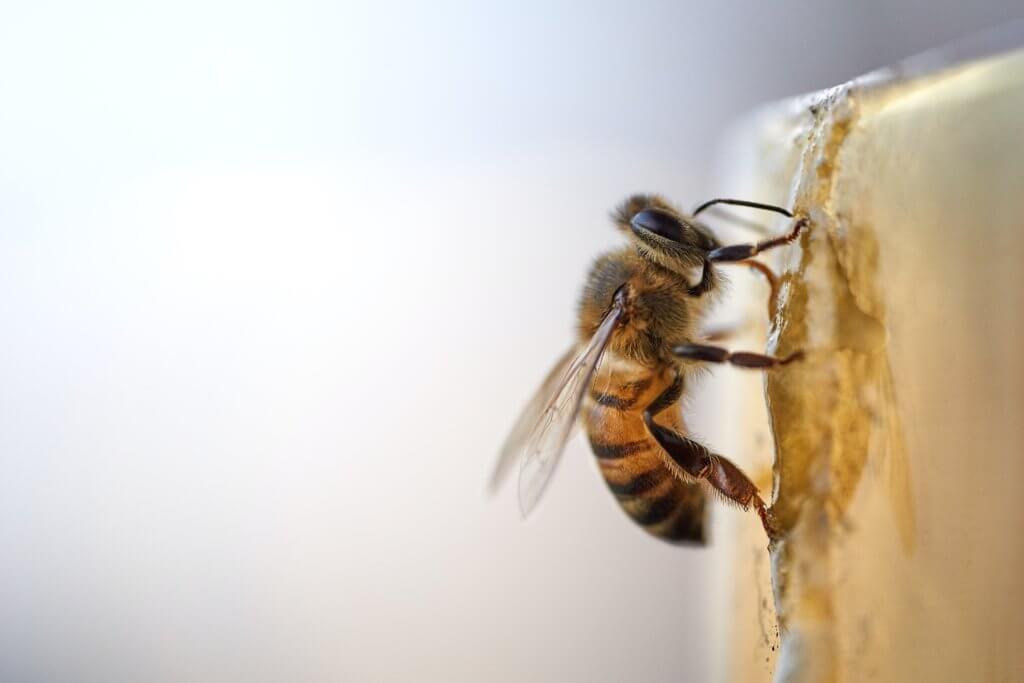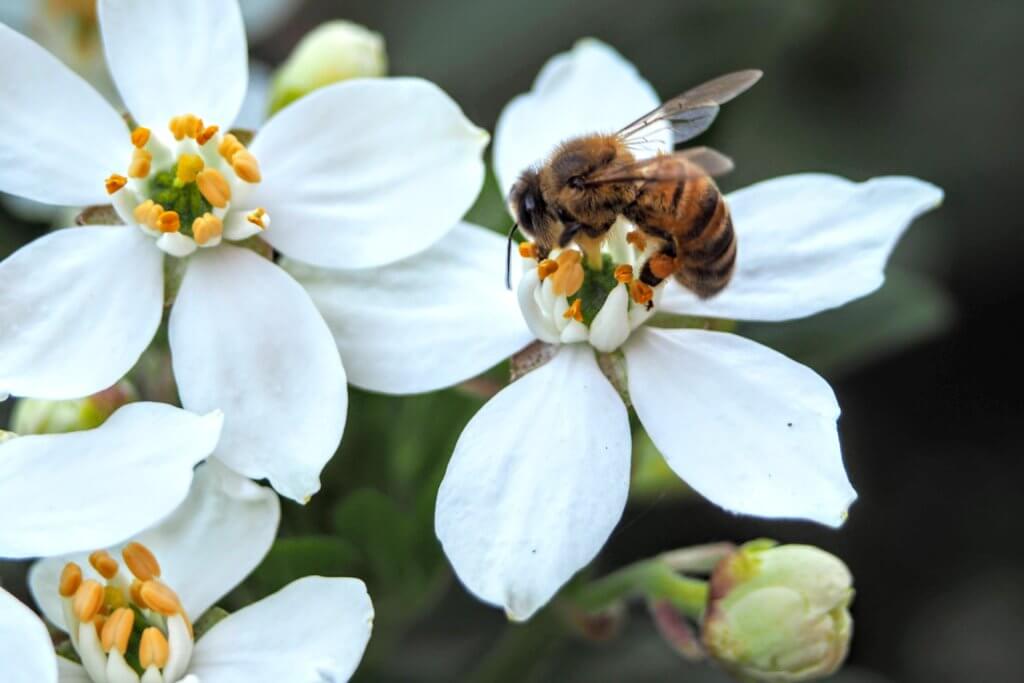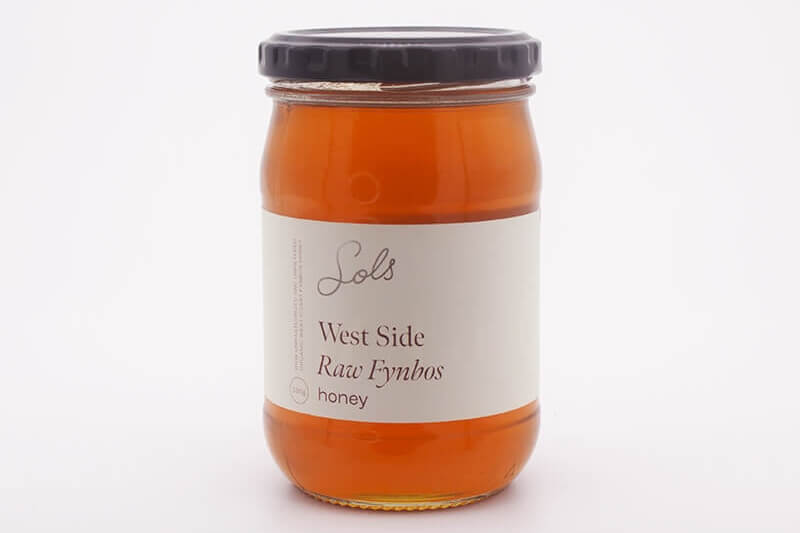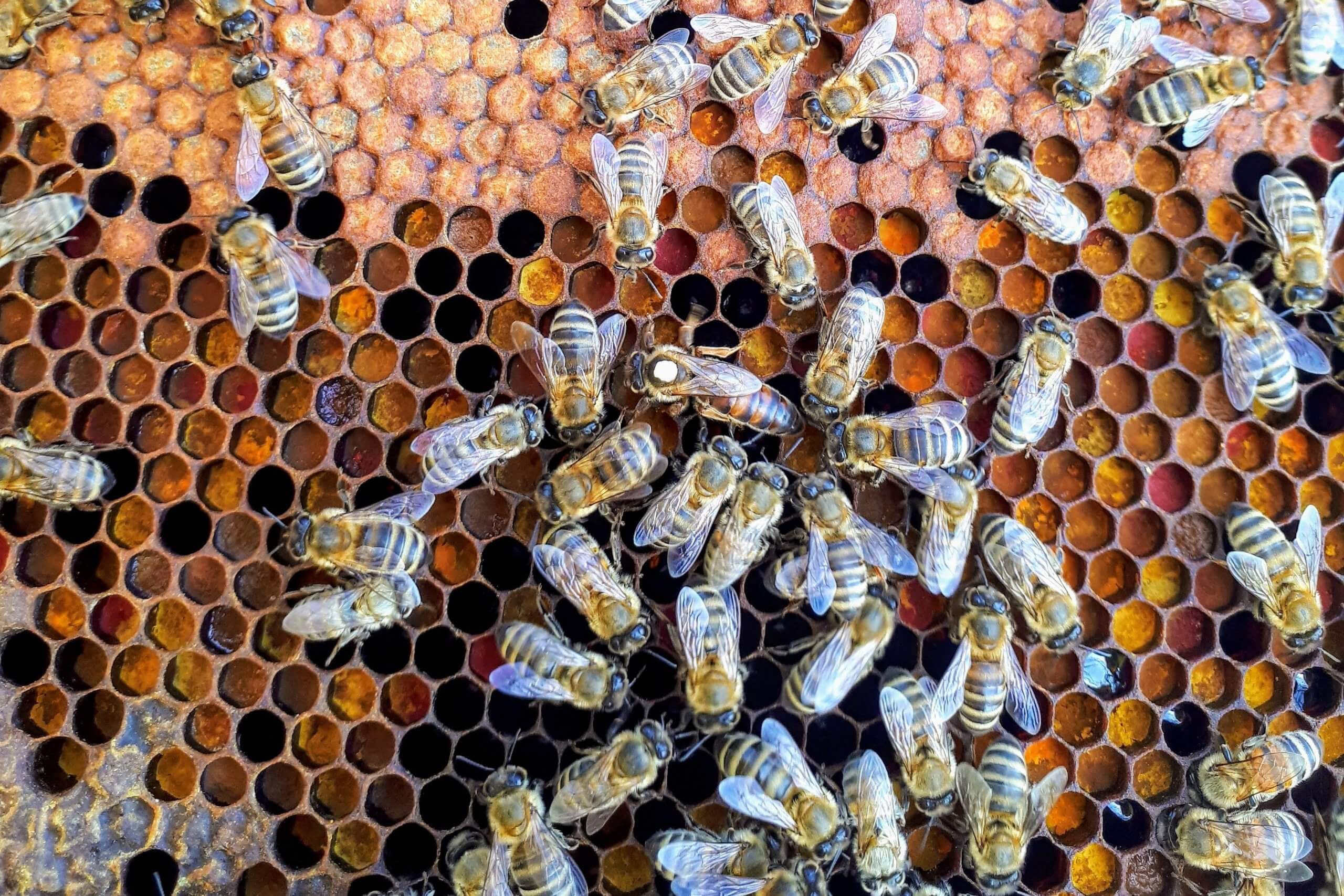Although World Bee Day has come and gone, the planet’s most efficient pollinators are still hard at work, producing one of the most delicious foodstuffs around.
“Do not underestimate the innocuous-looking bee, one of the greatest testaments to the Intelligence of Creation. It is the Busy Bee that feeds not just Human Beings but all other creatures on the planet. Our survival depends on theirs.”
Sadhguru
Did you know that honey doesn’t spoil? That’s just one of our 10 favourite facts about one of our fave food items.
How old is honey?
Flowering plants first appeared around 130 million years ago and a few million years later, bees began separating from wasps. At some point after that, bees began producing honey, with one fossilized honeycomb dating from around 3 million years before the present day. We’ve only been harvesting it for mere thousands of years – so if you needed a little dollop of perspective today, let this be it.
Why are bees so integral to the agricultural industry?
33% of all agricultural practices on earth are reliant on the pollination of bees. In an industry of about a billion people, the toil of bees directly affects over 300 million jobs. Let that sink in.

Busy bees tend to citrus and apple orchards as well as fields of Lucerne, sunflower and canola. If there is a portion of arable land within the farming sector that requires pollination, bees are generally on hand to get the job done.
Does honey have an expiry date?
This one is for the scientifically inclined. South African consumers are typically cautious about products that have gone beyond their “best before” date but, when sealed in an airtight container, honey is one of the few foods to have an eternal shelf life. While transforming nectar into honey, bees flap their wings at a furious rate to draw excess moisture out of the initially water-filled substance. Bees also have a special enzyme in their stomachs that helps to break the nectar down into gluconic acid and hydrogen peroxide, the latter acts to further prevent the growth of bacteria and other organisms in the honey.
Does honey have medicinal properties?
Evidence of honey being prescribed as a medical treatment dates back as far as ancient Mesopotamia. Because it is so inhospitable to bacteria, honey was often used as a natural bandage to protect cuts and burns from getting infected.
Is all honey made by bees?
There are 20,000 species of bees on earth and only a fraction of them make honey. While bees are most closely associated with commercial honey production, and rightly so, the Mexican honey wasp also produces honey on a large scale.
How much honey does a single bee produce in its lifetime?
On average, a honey bee produces 0,085% of a teaspoon of honey over the course of its life. To put that into perspective (your second dose today); two tablespoons of honey would be enough to fuel a bee’s entire flight around the world.
How productive are bees, really?
“Busy bee” wasn’t a phrase simply coined for fun. A typical beehive can produce anywhere from 14 to 45 kilograms of honey annually. To produce a single kilogram of the sweet stuff, a colony must collect nectar from roughly four million flowers and fly over 175,000 kilometres. All in a day’s work.

What type of flowers do Western Cape bees typically pollinate?
The Cape floral kingdom is one of only six biodiversity regions of its kind on the planet and is limited to the Western Cape in South Africa. Here, our friends are hard at work throughout the year, unlike in most regions where bees become dormant in the winter months. Cape bees smartly and studiously divide their efforts across the plethora of Clivias, Restios and Proteas for four seasons.
Why do the colour and flavour of honey vary so wildly?
Honey’s depth of flavour is determined by the source of the nectar from which it was made. The floral array in the Western Cape lends a slightly spicy, aromatic flavour to their honey which takes on a rich amber hue. Our raw fynbos honey is truly some of the good stuff.

Sol’s honey is a superb, 100% raw and unpasteurized product that is never allowed to exceed a temperature of 38 degrees Celsius. The honey is extracted, allowed to rest in vats and then the impurities (dead bees and wax) are sifted gently from it. It’s naked, honest honey local to the sandveld region of the West Coast where apiaries are situated around a plethora of fynbos (predominantly proteas) as well as wild fig, buchu, sour fig and gousblomme. A myriad of health and flavour benefits are derived from this beautifully simple procedure.
Bees are badass
Here’s some undeniable evidence that bees will resort to any means necessary to protect what’s theirs:
After reading and digesting these facts, why would you not absolutely love bees? We could go on for hours about how waffles, vinaigrettes, rooibos tea and root vegetables are all lost without honey.
Our ongoing proactive attempts to facilitate the efforts of bees around the globe will elongate Planet Earth’s very existence. Honey may not have a limited shelf life, but the world certainly does. Save the bees at all costs!


Want fruit salad now